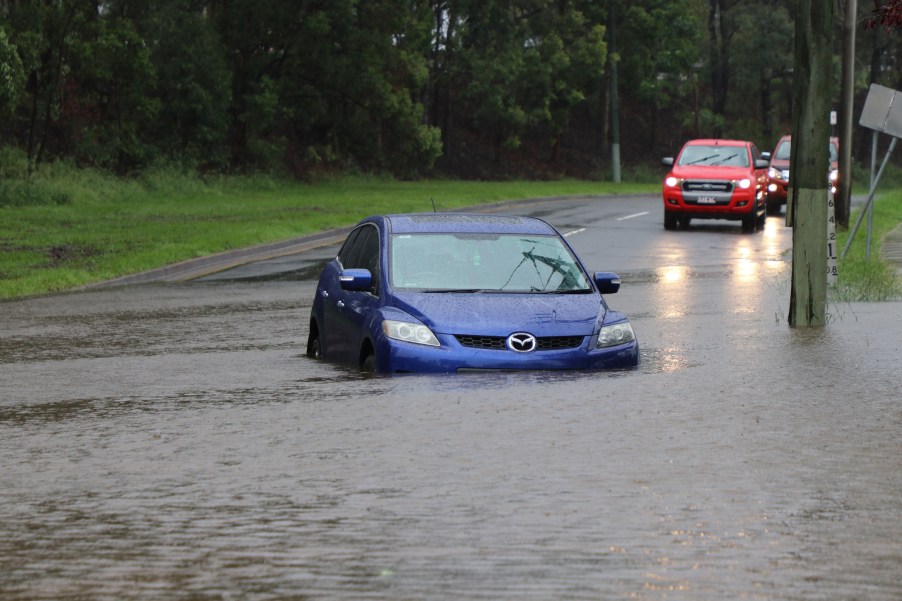
Flood damage might not be covered by your car insurance
Even if global warming isn’t real, natural disasters happen. Cars can get flooded in the blink of an eye. Some people even risk driving their trucks and SUVs through water just to end up needing to be rescued. How do you know if your car insurance protects against flooding?
Does car insurance protect against flooding?
Yes, some car insurance plans do cover flood damage. It might be important. I’ve seen plenty of flooded cars in my day. Some people leave their vehicles behind during hurricanes and they get washed away.
One time a guy left his Ford F-150 in drive and ran inside his home to use the toilet. When he came back, he found that his truck rolled into a nearby pond.
Another time, a lady took a wrong turn in a coastal town and drove her BMW sedan through sitting water. Her car started to float away.
There are tons of ways for water to total cars, but your car insurance might not cover the damage. It is covered under comprehensive insurance, which costs more.
Comprehensive coverage pays for damages that aren’t covered by accidents, such as theft, fire, vandalism, and natural disasters.
Some lenders may require you to have it under the terms of your auto loan. But who takes the time to read through that paperwork?

Some states, like North Carolina, only require drivers to have liability insurance, which is the minimum. This covers the damage you cause.
With inflation causing prices to rise, adding more insurance to your monthly bill can be difficult. However, that protection can also make a difference because flooded vehicles are often totaled.
Repairing engine damage, electrical problems, corrosion, and interior mold could cost more than the value of the vehicle.
You’ll want to submit photos of the damage as soon as possible. Cars that are submerged don’t take time to be considered as a total loss.
If your vehicle was swept away, your car insurance may send a tow truck to retrieve it. You can call the police to see if it was towed to a storage lot. Also, call before a storm hits to verify your coverage.



